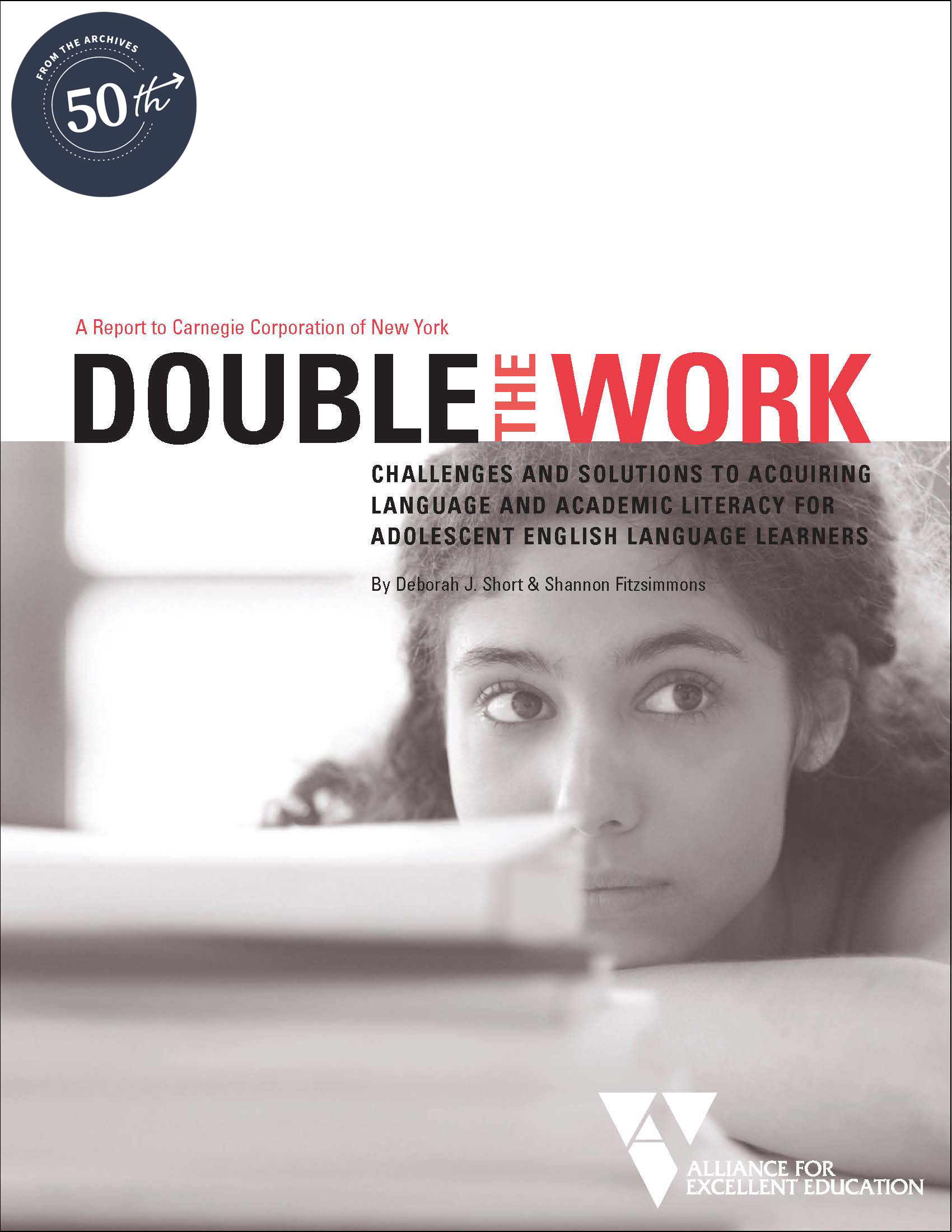Equity & Access
Multilingual Learners
Professional Learning
Double the Work: Challenges and Solutions to Acquiring Language and Academic Literacy for Adolescent English Language Learners
Summary:
This 2007 report by the Carnegie Foundation and the Center for Applied Linguistics identifies challenges faced by adolescent ELs in meeting grade-level academic expectations. It also provides recommendations for teacher education, educational research, school administrators and policy makers, along with instructional approaches likely to increase student achievement. The downloadable PDF would be an excellent resource for teacher-leaders designing professional development programs, developing grant proposals, doing advocacy work, and developing knowledge about teaching middle/high school ELLs.Double the Work (PDF), co-funded by the Carnegie Foundation and the Center for Applied Linguistics, outlines the challenges that secondary English language learners (ELLs) face in trying to meet grade-level academic expectations while they are still acquiring the English language. This report is crucial reading for all individuals who work with secondary ELLs, whether as classroom teachers, support teachers, or administrators.
Double the Work identifies the major challenges to improving literacy in adolescent ELLs:
- Lack of common criteria for identifying ELLs and tracking their performance
- Lack of appropriate assessments
- Inadequate educator capacity for improving literacy in ELLs
- Lack of appropriate and flexible program options
- Limited use of research-based instructional practices
- Lack of a strong and coherent research agenda for adolescent ELL literacy
The report makes the following recommendations to help meet the literacy needs of ELLs:
- Set common criteria for identifying these learners and tracking their performance.
- Develop new and improved assessments of their native language abilities, English language development, and content-knowledge learning.
- Build capacity among pre-service and current educators to instruct these learners effectively.
- Design appropriate and flexible secondary school programs that offer time and coursework that account for the second language development process.
- Use research-based instructional practices more widely and consistently.
- Fund and conduct more short- and long-term research on new and existing interventions and programs, and on the academic performance of these adolescent ELLs.
Up next
An LGBTQIA+ Bibliography for High-School Teachers
This short list of LGBTQIA+ books can be used when selecting texts to read as a teacher-inquiry group or to use with students in a high-school classroom. Annotated descriptions are included for each book along with other suggested book pairings.
Read more
Writing Project Teachers as Writers and Bloggers
By Grant Faulkner
This article highlights NWP teacher-consultants who use blogs as a tool for inquiry and reflection and as a way to converse with a community of educators about their classrooms, their pedagogy, and educational reform. Teachers reading this piece can see the myriad purposes of creating a blog, and also receive tips on how to begin. This article could be used during a summer institute or school-year professional development series to support and inspire teacher and student blogging.
Read more
Also Recommended
See allLost in Translation: Assessing Writing of English Language Learners
By Tom Meyer, Fabiola Lieberstein-Solera, and Martha Young
Creating Intentional Communities to Support English Language Learners in the Classroom
By Judith Rance-Roney


